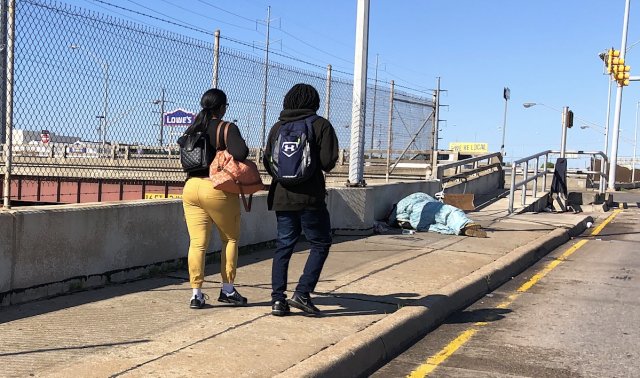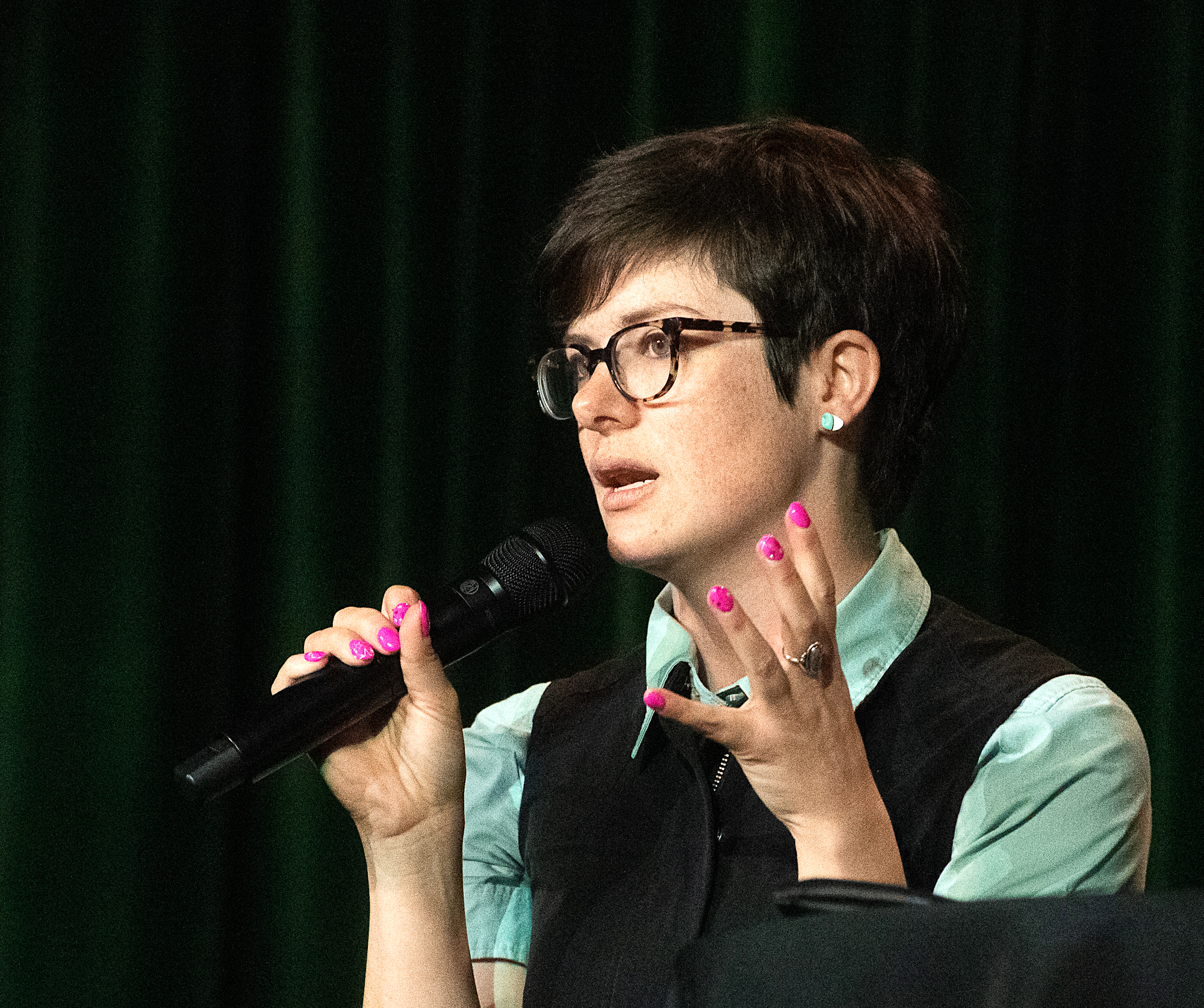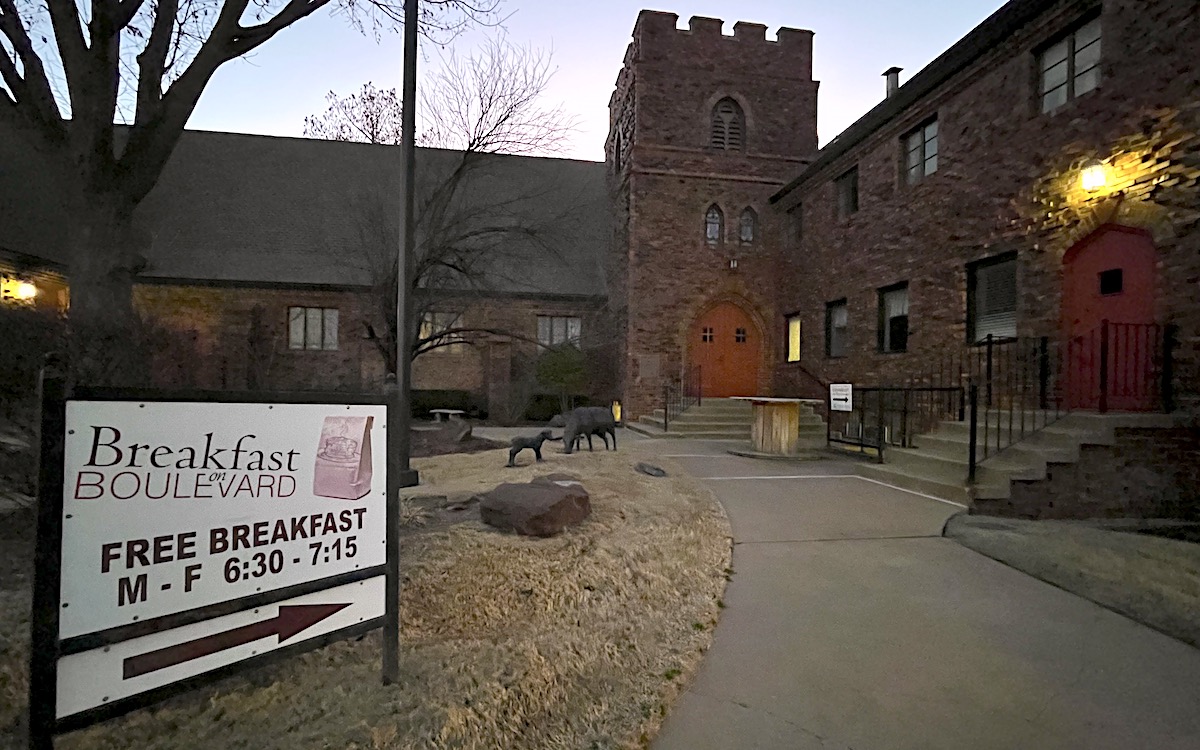

As a member of the Mental Health Association of Oklahoma’s street outreach team, Shelah Farley is the tip of the spear when it comes to addressing chronic homelessness in Oklahoma City.
Farley and several others spoke at an April 4 OKC City Council workshop on homelessness in the city, telling attendees about a two-year scaled-up pilot program that aims to take 500 of the most chronically homeless people off the streets by 2025. Part of a broader “housing first” strategy, OKC’s program will involve interventions at homeless encampments with an offer of up-front housing to individuals willing to participate. Ultimately, city officials intend close an encampment permanently after the interventions.
Farley is a part of that effort, which will cost $12.5 million and is being paid for by a mix of public and private funds. Currently, the City of OKC spends about $9 million each year in addressing homelessness, most of which comes from the federal government.
And it all begins with people like Farley who take those initial steps of meeting unhoused people where they are — living at encampments scattered around the city. An estimated 1,339 homeless people live on OKC’s streets on any given day, according to a recent count.
For six years, Farley has been working to get people off the streets and into permanent housing. The process is long and arduous, and it usually starts by building trust.
“When you think about someone that has lost everything, along the line there was trust that was lost,” Farley said. “So now you’re on the street. You have people bringing you a sandwich or some water. They make you promises they can’t actually keep, but you hold onto that promise they’re going to come back and get me into housing. They’re going to help me. And it never happens. So when that continually happens over time, you no longer trust the community.”
Farley told OKC City Council members about “Joe,” a man whom she had helped find a home during her time working on street outreach. Joe didn’t trust Farley and those who had tried to help him previously. They engaged with him for months, until Joe finally relented and agreed to make a plan for change.
“He finally said, ‘If you’re willing to put in the work, so am I,’” Farley said.Joe was connected with services, and he was using them while still living on the streets. One day, while using those services Joe returned to find his tent and all his belongings were gone.
“This was Joe’s worst fear come true,” Farley said. “Joe experienced this a couple of times — his home being thrown away. Each time, street outreach had to start over. Joe is housed now, but it took over six months to house Joe.”
When Farley and others go into encampments to start building that trust and connecting people with resources, it starts with gathering IDs and other documents like birth certificates — anything that can help establish a person’s identification.
“We build those relationships while getting vital documents, and while that is going on the housing navigation team will visit them at their encampment, and while that is going on the unit acquisition team is looking for housing,” she said.
Farley said that, under OKC’s current pilot program, she’s seen homeless encampments emptied and all of the residents housed in as little as three or four weeks.
Stitt ends state council, says ‘building housing’ not the answer
Less than two weeks after OKC’s homelessness workshop, Oklahoma Gov. Kevin Stitt made headlines on the same topic but for different reasons: choosing to end the state’s Interagency Council on Homelessness and telling media that “building housing and giving people free stuff is not the answer.”
Formed in 2004 under former Gov. Brad Henry, the 26-member council had been tasked with coordinating agencies across the state to improve efforts to address homelessness. At the time of its dissolution, the council had been formulating a five-year plan to address homelessness in the state, according to The Frontier.
Stitt cited the need for local municipalities to grapple with homelessness as a reason for ending the council.
“We need a fresh set of eyes on there,” Stitt said Friday following the council’s dissolution. “So some 20-year-old commission I didn’t think could move the needle on homelessness.”
Asked about the need to increase housing to address homelessness, Stitt was less than enthusiastic about efforts like those OKC is embarking on, which include finding housing for people living on the streets and building additional housing for future needs.
“Here’s the deal. Building housing and giving people free stuff is not the answer,” Stitt said in the video above. “You can go look at what other big cities have done to try to house people and build housing or put them up in hotels.”
RELATED
‘You are not welcome’: Without shelter, resources limited for Edmond’s unhoused by Joe Tomlinson
After listing recent efforts by the Oklahoma Legislature to improve mental health care access, Stitt said some of those who are homeless remain in that situation because they don’t want help.
“People need jobs. People need jobs. They need mental health (care) that they need,” he said. “There’s the drug addiction, and there’s people out there who, for whatever reason, are refusing to get the help that they need.”
Stitt said churches and other organizations are well-equipped to handle the state’s homeless problem. He does not favor building additional housing, nor does he approve of encampments.
“We have a lot of nonprofits, we have a lot of churches around this issue, we have investments in mental health,” he said. “We need to force these folks to get into mental health facilities. But we’re not going to allow tents, as long as I’m governor in Oklahoma. We’re not going to build housing. We’re going to try to get them the help and get them the job that they need.”
Oklahoma City Homeless Alliance executive director Dan Straughan was serving on the statewide council at the time of its dissolution. Straughan said the Homeless Alliance adopted a housing-first approach for those with a high barrier to housing about a decade ago. He said the one-year retention rate is about 90 percent for those placed in housing-first scenarios when the housing is paired with other services.
“When the governor said people who are homeless need mental health services and a job, he’s not wrong,” Straughan said. “But they also need education, rehabilitation services, access to health care, and on and on you go. It’s different for everyone, but the one thing all homeless people have in common is that they need a home. It’s not all they need, but it is proven that when they have a stable home they are more likely to have a job, complete their education, and live a more stable and productive life. So for the governor to ignore the home part of homelessness is a mistake.”
Straughan said the council typically met six times a year and cost the state virtually nothing. He said one of its biggest benefits was the ability to get leaders of major state agencies together to communicate.
“It was worth it just to have that time to communicate so when there was an issue you knew who might be able to help,” Straughan said.
Collaboration is important to max out resources

Back at the April 4 City of OKC workshop, strategy implementation manager Lindsay Cates told attendees that collaboration is the most important factor when it comes to addressing homelessness on a broad scale. She said OKC’s current pilot program brings together a variety of organizations with expertise in caring for homeless people.
Oklahoma City Mayor David Holt created a task force to examine the city’s homeless problem four years ago, and this pilot program is the product of that effort.
“We’ve been working on this planning for implementation for about the last year or year and a half,” Cates said. “The providers have been working this way since the mayor’s task force started with the aim of seeing how we can collaborate and work better together. The more collaboration, the more effective we can be. And I think with this encampment rehousing approach, I think it will be more effective for providers to get people housed more quickly.”
Dallas and Houston have had burgeoning homeless problems that the cities have worked to address. In 2021, Dallas City Council members approved a $72 million plan to put 2,700 people experiencing homelessness into permanent housing. Houston has decreased its unhoused population by more than 60 percent since 2011 with a similar funding push.
OKC’s pilot program spending breakdown includes $6.9 million for rental subsidies, $2 million for stabilization services including case managers, $1 million for moving kits and landlord incentives, and $1.3 million for management and administration.
The cost to house someone in the program is about $24,000, which includes the salaries of employees doing outreach, rental payments and the move-in kits that can include basic household supplies and furniture.
While Oklahoma City’s $12.5 million over two years might seem paltry compared to the commitments in Dallas and Houston, Cates believes other cities’ successes can be leveraged into more money down the road.
“Dallas put $70 million on the table, and then over a couple of years the HUD awarded them another $23 million,” Cates said. “So to me, the hope is we can leverage those public and private dollars and we can get more federal funds. We know that federal funds always come with limitations, and so that’s where the community itself can step up and say these dollars can help in a different way. That’s the blend of public and private that we’re going to need.”
Council members are cautious but optimistic

OKC Ward 2 Councilman James Cooper, who also served on the mayor’s task force that developed the current pilot program, said this is the beginning of a long-term effort.
“I think $12.5 million over a two-year period is encouraging,” he said. “My hope is at the end of those two years we then understand how that $12.5 million investment strengthened this system that we are creating so that we can scale up capacity to better meet people the moment they first encounter homelessness so they’re never in a position where they find themselves in an encampment and a tent.”
Cooper said it’s unlikely the problem will be solved in two years no matter how successful the current program is. He said while there is a fairly accurate accounting of actual numbers of people on the street on any given day, hundreds of others, including students in Oklahoma City Public Schools, are on the cusp of homelessness every day. He said the program needs to show a strong measurable outcome.
“I’m a pragmatic person so, of course, I’m going to cite data and outcomes,” Cooper said. “I’m a compassionate person but I’m also surgical. Hopefully, when we come back in two years after this scaled-out pilot program we will be able to see what lessons we learned and we can scale it up even more. I can assure everybody we’re not done. We won’t be done in two years. OKCPS has 1,900 kids who are experiencing housing insecurity. There are a whole lot of issues still out there.”
While last year’s official unhoused count in Oklahoma City stood at 1,339, Ward 6 Councilwoman JoBeth Hamon said numbers expand and contract, and understanding why that happens is among the most important parts of the process of reducing homelessness. The city’s current pilot program has the goal of reducing the chronic homeless population on the streets by 75 percent by 2025, but even more people could be living on the streets by then.
“It really is difficult to get an accurate count,” Hamon said. “There are so many different situations people find themselves in. The root of it is we have a lot of poverty in the city and Oklahoma and a lot of our safety nets have holes. What we’re seeing is that people want the city to do something about it when people have fallen through every single one of those holes in the nets and ended up on the street. I think we have a number of people who are on that edge.”
Hamon said addressing housing costs is another way to help strategically reduce the unhoused population. That’s easier said than done, however, as OKC’s housing market has seen an upswing in housing prices in recent years.
“I think programs like this are great as far as reducing the chaos in people’s lives and getting them the assistance they need, but the reality is the longer term picture is also important,” she said. “We need to be implementing the housing affordability plan to really keep that number down long-term.”





















